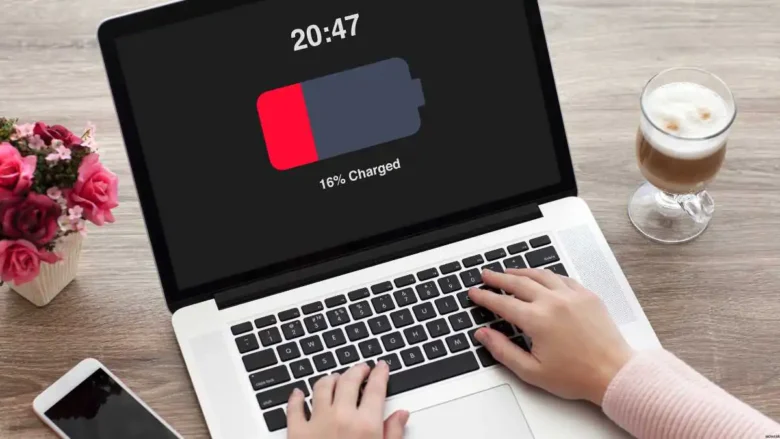One of the most common laptop problems is a dead battery, especially during extended periods of work or study. A rapidly draining battery not only impacts productivity but can also be incredibly frustrating. Understanding the causes of rapid battery drain and how to fix it can extend battery life and improve your laptop’s performance. This article introduces some simple and effective tips to help you solve the problem of a rapidly draining laptop battery and improve overall performance.
Understanding Why Your Laptop Battery Drains Quickly
Before addressing the problem, you need to understand why your laptop battery is draining quickly. There are many reasons for a rapidly draining battery, such as too many applications running in the background, outdated drivers, excessively high screen brightness, or incorrect power management settings. Sometimes, the battery itself can also be old or damaged. Once you’ve identified the problem, you can take the appropriate steps to resolve it.
Adjusting Power Settings for Better Efficiency
Adjusting your power settings is one of the simplest and most effective ways to prevent rapid battery drain. Windows laptops, for example, have built-in power plans designed to balance battery life and performance. Switching to power-saving mode reduces CPU efficiency slightly but saves significant energy. You can also adjust settings like screen time, sleep time, and background applications. These improvements ensure your laptop only uses energy when needed, extending battery life.
Reducing Screen Brightness to Save Energy
You may not realize it, but your laptop screen uses a significant amount of energy. Excessive brightness drains the battery faster than almost any other component. By lowering the brightness to a comfortable level, you can significantly extend battery life without affecting operation or viewing content. Many new laptops feature adaptive brightness settings that automatically adjust the screen brightness based on the ambient light. This provides a pleasing visual experience and saves energy at the same time.
Close Unnecessary Background Applications
Even if you think you’ve closed some applications, they’re still running in the background, consuming valuable memory and energy. Applications like browsers, chat tools, and cloud storage services often run tasks in the background, which consumes battery power. You can open Task Manager to see which programs are using the most resources and end them. Regularly checking and closing background programs saves energy and prevents your device from unnecessarily draining its battery.
Close Power-draining Startup Programs
When you start your laptop, many programs start automatically without your permission. These startup programs not only slow down your computer but also drain the battery. You can use Task Manager or System Settings to disable unnecessary programs. By running only essential programs at startup, you can save energy and improve efficiency. This is especially important when you’re running on battery power and not connected to a power source.
Updating Software and System Drivers
If your laptop is using older software and drivers, power management features may not function properly. Updates can usually fix bugs and improve performance, reducing your computer’s energy consumption. Check for updates regularly through Windows Update or visit the manufacturer’s support website. Keeping your operating system, BIOS, and drivers up-to-date can improve your laptop’s efficiency and reduce energy consumption. This helps prevent battery drain.
Keep Your Laptop Cool to Extend Battery Life
One of the biggest factors affecting battery life is overheating. When a laptop overheats, the battery and internal components have to work harder, causing the battery to drain faster and potentially damaging it over time. Make sure your laptop’s air vents are clean and unobstructed. You can also use a cooling mat to keep the temperature stable. Avoid using your laptop on soft surfaces like mattresses or sofas, as these surfaces can obstruct airflow and cause the device to overheat. Keeping your laptop cool not only extends battery life but also improves performance and battery life.
Adjusting Graphics and Performance Settings
Even with simple adjustments, laptops with a dedicated graphics card typically consume more power. You can adjust the graphics settings to use the integrated graphics card for everyday tasks and reserve the dedicated graphics card for more power-intensive tasks, such as video editing or gaming. You can also reduce power consumption and heat generation by lowering performance settings in games or software. By fine-tuning your graphics and performance settings, you can better balance power consumption and performance, thus extending battery life.
Conclusion
You don’t need to be an expert in computers or spend a significant amount of money to address your laptop’s battery life issue. A few small adjustments, such as changing your power settings, lowering your screen brightness, closing rarely used apps, and keeping your laptop’s temperature stable, can make a significant difference. Regular system updates, proper device maintenance, and mindful usage all contribute to longer battery life and better performance. These simple methods can extend your battery life and keep your computer running more smoothly, wherever you are.
FAQs
1. Why does my laptop battery drain even when not in use?
When a laptop is in sleep mode, some scheduled background activities or updates may still be running. This can cause a slight decrease in battery life. You can prevent the issue by closing background updates and shutting down the laptop completely.
2. How long do laptop batteries typically last?
Depending on your usage, charging frequency, and maintenance, most modern laptop batteries last two to five years.
3. Is leaving my laptop plugged in constantly harmful to the battery?
Although modern laptops have intelligent charging mechanisms, leaving them plugged in constantly can still cause them to overheat, which can damage the battery over time.
4. How can I verify the health of my laptop battery?
You can use Windows PowerShell commands or the built-in battery reporting tool to check the battery’s health and capacity.
5. How can I charge my laptop battery more effectively?
Avoid letting your battery drop below 20% and try not to keep it at 100% for long periods. Charging between 20% and 80% helps maintain long-term battery health.




